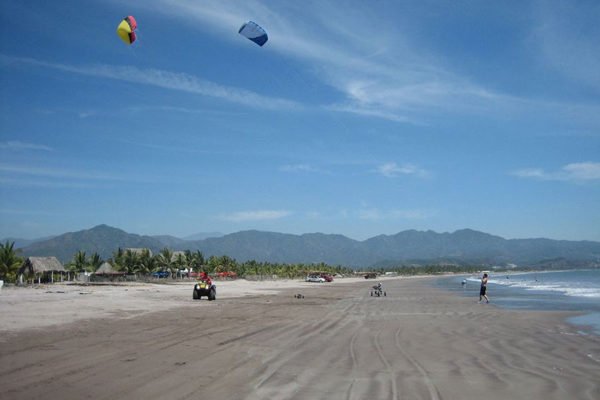Garbage on beaches is ‘a cultural problem’
But part-time resident sees some positive changes in San Blas, Nayarit
For beach destinations in Mexico, the Easter Week vacation brings hordes of tourists and economic spillover. But it’s not all good: garbage is another byproduct. That was the case for beaches in Nayarit, which were left littered with trash after the first week of the Easter holiday.
For a federal government official the situation reflects “a serious cultural problem.”

Roberto Rodríguez Medrano, state representative of the Secretariat of the Environment and Natural Resources (Semarnat), said visitors who came from within the state and elsewhere had “flunked” in terms of waste management.
“[It was] terrible after the first week; I definitely believe that that there’s little acknowledgement of the efforts made by the authorities to maintain clean beaches,” Rodríguez said.
He told the newspaper Meridiano de Nayarit that those efforts included municipal clean-up brigades and an initiative of several non-governmental organizations, such as Pro-Sayulita, in which beachgoers were given an empty bag upon their arrival. Whoever returned the bag with the most trash received a prize.
“We should not have to go to such extremes. Every tourist should respect the space they’re enjoying and leave it at least in the same conditions they found it,” he said.
Rodríguez doesn’t think an insufficient number of garbage cans is a factor.
“I don’t think it’s an excuse.” Beachgoers should pick up after themselves and carry their trash back to wherever they came from to properly dispose of it, he said.
He also said that municipal waste management systems are overrun during the vacation period when “many more tonnes of trash” are produced in just one week, creating problems for each of the coastal municipalities.
The beaches of Nayarit had been certified prior to the current vacation period and an audit will be performed after.
But Rodríguez sees little value in the certification. The state government invests a lot of resources in the process while those who enjoy the beaches “don’t help to maintain them.”
However, for at least one beach in the region there are other indications of positive change, according to a part-time resident.
Mexico News Daily reader Fred Olin reports that history was made this year when the mayor of San Blas announced that the law banning vehicles on beaches would be enforced. And it was.
Olin said tens of thousands of people were able to relax at Matanchén beach due to the absence of cars, trucks, motorcycles and ATVs.
Mayor Candy Yescas announced the measure last month, questioning how families could fully enjoy the beaches when they were being used as race tracks by inebriated drivers.
While Semarnat’s Rodríguez lamented that many people left their garbage behind, Olin observed that garbage was collected daily from garbage and recycling deposit centers.
The snowbird from the state of Washington in the United States welcomed the changes, which included the manning of lifeguard towers and the presence of law enforcement from all jurisdictions on the entire expanse of the 6.5-kilometer-long beach.
“Hopefully a new tradition has begun.”
Source: Meridiano (sp)